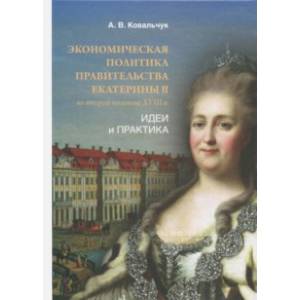Economic policy of the Government of Catherine II in the second half of the XVIII century. Ideas and practice
Please sign in so that we can notify you about a reply
Freedom and coercion ... Both of these concepts are inseparable from one another in relation to all the vicissitudes of centuries -old Russian history. Both are attached to any field of human activity. Economic almost in the first place. Which of the two to give preference?
Empress Catherine II, taking the Russian throne, made a choice in favor of freedom. But can economic freedom exist without political? And how to forget about the famous bosses of serfdom during the period of its reign known from the school bench? Such questions can be asked by the reader. And it will be right in its own way.
However, not everything is so clear. Throughout the reign, the empress remained committed to the idea of economic freedom, absorbed along with the ideas of her century, the age of education. And even heeded in the first years of stay on the throne the plans for its implementation. The new rules and principles formulated even then were much later based on the implemented guild reform. Thanks to her, new forces came in motion, an impetus is given to the development of free entrepreneurship. It was it that began vigorously punching himself Doro17 in fact contrary to the will of the empress. But by no means these forces were expected to arouse Catherine in her thoughts on the direction of the economic development of the subject power, dreaming of agricultural abundance.
In this study, based mainly on the first-introduced documentary sources introduced into the scientific circulation, the background of the events that led to the change of the government economic course in the early 60s is considered. XVIII century., The "ideal" economic model is reconstructed in the representation of Catherine II, the Empress’s practical steps are traced in the leadership of key sectors - distillery and socialist
Empress Catherine II, taking the Russian throne, made a choice in favor of freedom. But can economic freedom exist without political? And how to forget about the famous bosses of serfdom during the period of its reign known from the school bench? Such questions can be asked by the reader. And it will be right in its own way.
However, not everything is so clear. Throughout the reign, the empress remained committed to the idea of economic freedom, absorbed along with the ideas of her century, the age of education. And even heeded in the first years of stay on the throne the plans for its implementation. The new rules and principles formulated even then were much later based on the implemented guild reform. Thanks to her, new forces came in motion, an impetus is given to the development of free entrepreneurship. It was it that began vigorously punching himself Doro17 in fact contrary to the will of the empress. But by no means these forces were expected to arouse Catherine in her thoughts on the direction of the economic development of the subject power, dreaming of agricultural abundance.
In this study, based mainly on the first-introduced documentary sources introduced into the scientific circulation, the background of the events that led to the change of the government economic course in the early 60s is considered. XVIII century., The "ideal" economic model is reconstructed in the representation of Catherine II, the Empress’s practical steps are traced in the leadership of key sectors - distillery and socialist
Category:
- Category:Biographies & Memoirs
- Category:Culture
ISBN:
ISBN:978-5-4469-1185-1
No reviews found
